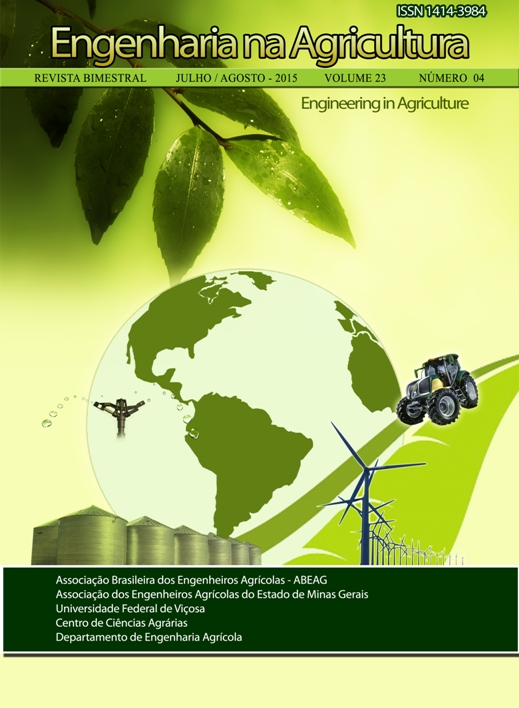MONITORING OF LOSSES IN THE PROCESS OF MECHANICAL HARVESTING OF TOMATO - DOI: 10.13083/1414-3984/reveng.v23n4p315-325
DOI:
https://doi.org/10.13083/reveng.v23i4.533Keywords:
cartas de controle, perdas de frutos, Solanum lycopersicum, variabilidadeAbstract
Losses due to mechanical harvesting of tomatoes are not yet the focus of research in Brazil, since studies on this topic are scarce; however losses can reach high levels, potentially reducing the productivity. In this context, the present study sought to evaluate the quality of mechanized harvesting of tomato on an industrial scale, utilizing the losses arising from the process by means of statistical process control. The experiment was performed using a harvester brand Co.Ri.Ma SRl, Iveco engine with six cylinders and power of 129 kW, monofilament, with cutting platform reaching 1.50 m. The cultivar used was Heis 9553 with spacing of 1.25 m between rows. The experimental design was completely randomized, constituting 64 repetitions in function of two treatments (32 replicates for green fruits and 32 for red fruits). The control charts of individual values and moving ranges are tools that assist in monitoring the quality of losses resulting from the mechanized harvesting operation. Losses on the cutting deck were higher for the red fruits and the highest variability of the harvesting process was also observed for red fruits.Downloads
Downloads
Published
How to Cite
Issue
Section
License
Authors who publish with this journal agree to the following terms:
The author(s) authorize(s) the publication of the text in the journal;
The author(s) ensure(s) that the contribution is original and unpublished and that it is not in the process of evaluation by another journal;
The journal is not responsible for the views, ideas and concepts presented in articles, and these are the sole responsibility of the author(s);
The publishers reserve the right to make textual adjustments and adapt texts to meet with publication standards.
From submission, the author is fully conceding the paper's patrimonial rights to the publication, but retaining the owner of its moral rights (authorship and paper's identification) according to Creative Commons Attribution-Noncommercial.








 Licensed by
Licensed by 